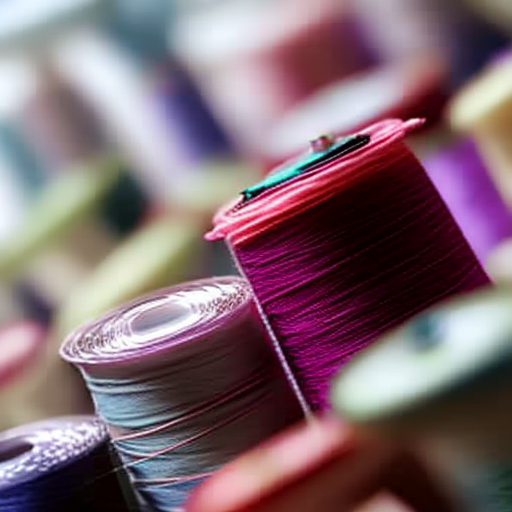
Sewing Thread: The Unsung Hero of Stitching
When it comes to sewing, the humble sewing thread plays a crucial role. It may seem like a mundane accessory, but it is an unsung hero that holds garments, quilts, and countless other items together.
The quality of sewing thread used in any project can make a substantial difference. Here are a few reasons why a good sewing thread is essential:
- Strength and Durability: A strong sewing thread ensures that your stitches will last. It can withstand the tension and pulling that often occurs in sewing projects, preventing seams from unraveling.
- Smooth Performance: High-quality sewing threads are designed to glide smoothly through the fabric, making your sewing experience effortless. They reduce friction, preventing thread breakage or snags.
- Colorfastness: The dye used in a good sewing thread is less likely to bleed or fade, ensuring that your stitches remain vibrant and unaffected even after repeated washes or exposure to sunlight.
- Versatility: Depending on the project, different types of sewing threads may be required, such as cotton, polyester, silk, or nylon. A good thread offers a wide range of available options to suit various fabric types, stitching techniques, and applications.
- Finer Details: When undertaking delicate work like embroidery, quilting, or topstitching, using a quality sewing thread is crucial. It allows for precise and intricate work without compromising the integrity of the final product.
Choosing the right sewing thread can seem overwhelming, given the variety available on the market. However, a few key factors can guide your decision:
- Thread Weight: Common thread weights include 30, 40, 50, and 60. Thicker threads like 30 or 40 weight are suitable for heavy-duty projects, while finer threads like 50 or 60 weight are better suited for lightweight fabrics or delicate work.
- Material Composition: The material used in sewing thread affects its strength, appearance, and behavior. Cotton is a versatile choice, polyester provides extra strength, silk gives a luxurious finish, while nylon offers durability.
- Thread Color: Ensure the thread color complements your fabric and meets your aesthetic preferences. A mismatched thread can be distracting or compromise the overall look of your project.
Conclusion
Don’t underestimate the power of a good sewing thread – it truly is the unsung hero of stitching. By investing in high-quality threads that suit your project’s needs, you can elevate the quality and longevity of your creations. So, next time you sit down to sew, remember the importance of this seemingly small accessory that ties it all together!





I’m so excited to start learning how to sew. #SewingThreadGood
Josie Brown: This looks like a great way to start! #SewingThreadGood
#SewingThreadGood is a great place to start for anyone who wants to give sewing a try! With the right tools and techniques, you’ll be making all kinds of creations in no time. Don’t forget to use good quality thread to ensure your projects last for many years to come.